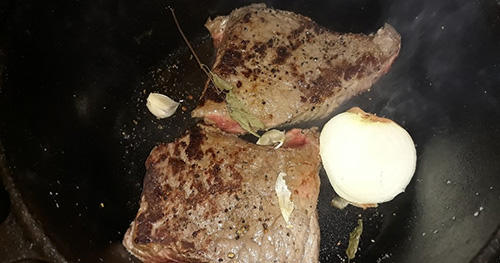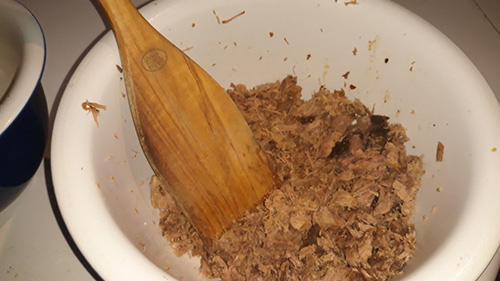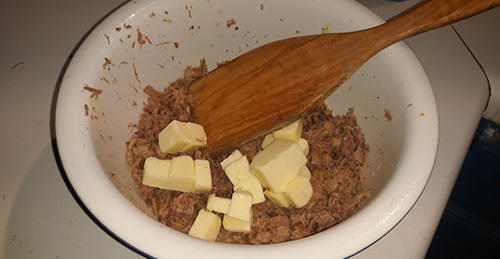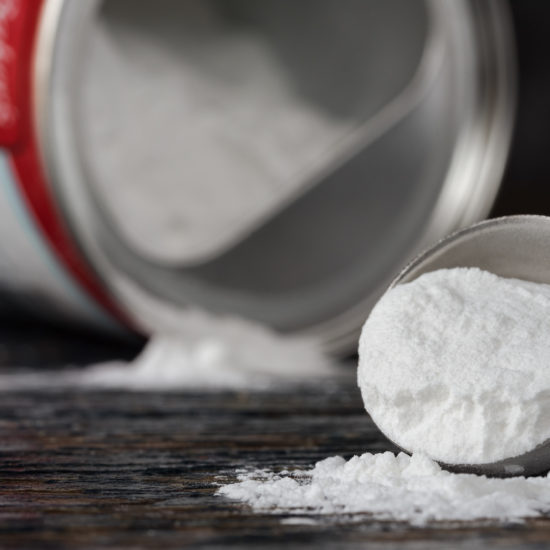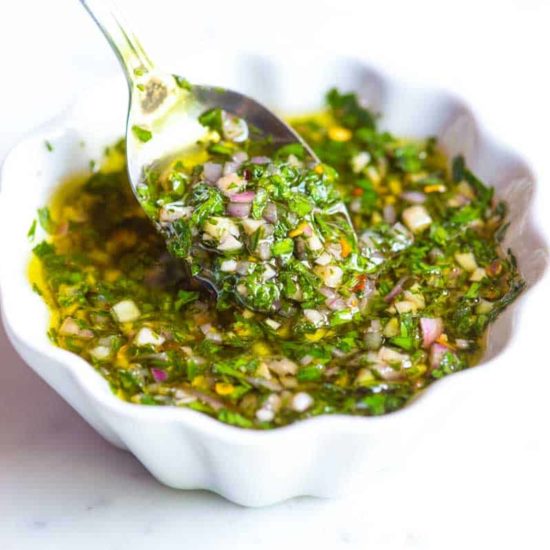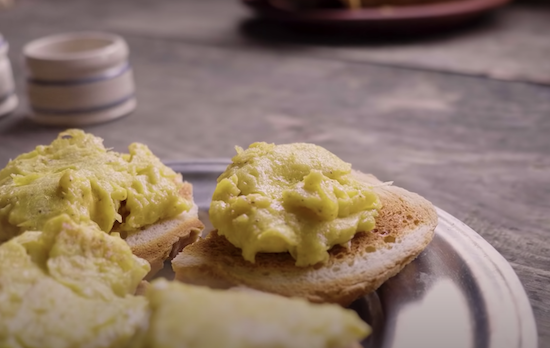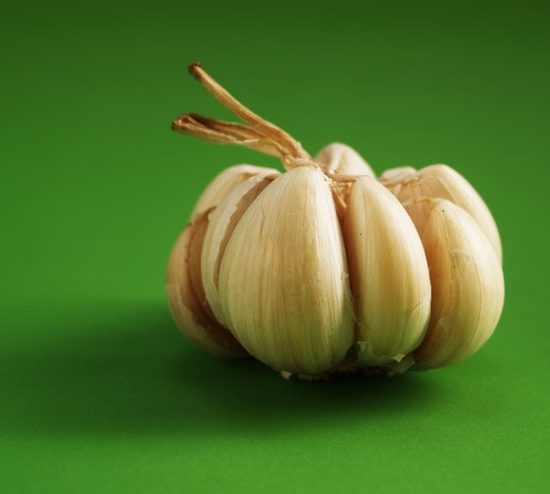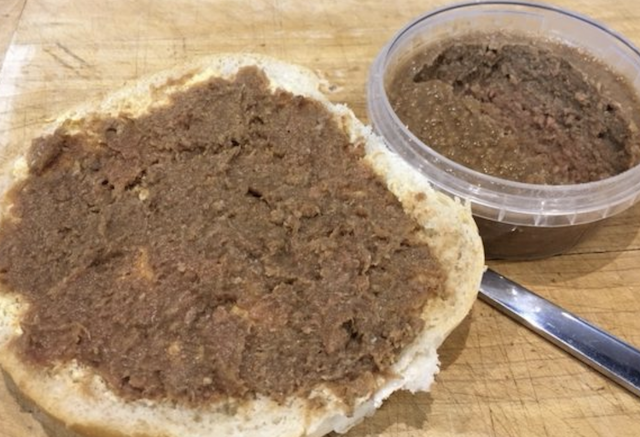
A potted meat food product is a food preserved by canning and consisting of various seasoned cooked meats, often puréed, minced, or ground, which is heat processed and sealed into small cans. This is different from potted meat, an older noncommercial method of preserving meat.
When you think of potted meat you probably think of Armor. Ritz cracks and that weird gelatin on top might come to mind, too. If you are like me, you think of great memories on the couch with dad. We would eat this stuff together and watch TV.
You might also think of your own pantry. You know, these canned meats have a tremendous shelf life and make for a great protein solution. Did you know that canned meats can last up to 5 years beyond the best by date printed on the can?
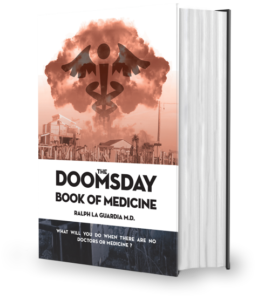
The Plant You Can Use as a Diuretic But Also To Make a Great Wine! Good news? It grows all over the place. Details here
While you might think that potted meat came to be during the age of metal canning and the industrial revolution, you would be mistaken. Just because it’s in a tin can today does not mean it started that way. The potting of meat or preserving meat by covering it in its own fat is hundreds of years old.
It was a process so popular, in fact, it was published in more than one volume on cooking in the 1700s. We are going to be using a recipe from the 1778 book A Lady’s Assistant By Charlotte Mason. The recipe is called Potting Beef.
I like this recipe best because it’s very easy, it doesn’t require any added nitrites and it can be executed with everything the average person has on hand. We are going use a modern-day twist on the “POTS” used but other than that it will be pretty much the same method used in the 1700s.
The Power of the Fat Cap
Before we get to the process of potting meat I would like to talk about the preserving power of fat. When it hardens fat creates a barrier from moisture and oxygen.
Most bacteria need moisture and oxygen to survive. Without those two things, bacteria will not be able to proliferate. That fat cap on potted meat is what preserves it. That barrier is vital. It’s very similar to the process of the French confit which preserved duck legs under duck fat.
The ideal place to store your potted meat will be in a cold place where the fat cap can harden. That is assuming the power is out. Of course, a fridge will be the best option. The French even buried their duck confit in earthenware to assure that fat cap did not get compromised.
Related: The vital self-sufficiency lessons our great grand-fathers left us
Tools
The “pots” that would have been used were little more than earthenware or ceramic cups. Before the tin can this was how meat was potted. Our modern twist on this recipe is the resourceful use of coffee cups as the pots. I figure we all have a few too many coffee cups.
- A Few Coffee Cups
- A Large Bowl
- A Sauce Pot
- A Muddler or Another Tool to Pulverize the Beef
Ingredients for Potted Meat
- A Few Pounds of Beef
- Good Whole Butter
- Clarified Butter
Related: Build yourself the only unlimited water source you’ll ever need
The Process of Making Potted Meat
Potting beef is very simple. Let’s start with that. We are simply going to mash up the meat and beat in some more fat. Then we are going to cover the entire thing with even more fat.
#1. Slow cook your beef, however, you are comfortable until it is falling apart. You can use a Dutch oven for this if you don’t know what you’re doing.
Once the meat is tender you are going to want to shred it a bit and chill it.
#2. After 8 or so hours your meat should be completely chilled, and you can start the process. Place all the meat into the bowl and begin to mash it with your muddler or something else hard that will really macerate the meat.
I guess you could use a food processor for this step but if you are making this recipe from the 18th century it seems kinda weird.
#3. Now you are going to add an extra third the amount of butter to your meat and continue mixing this. You really want to incorporate the butter.
Understanding the idea behind an extra third is very important because it gives you the ability to reproduce this recipe no matter how much beef you have.
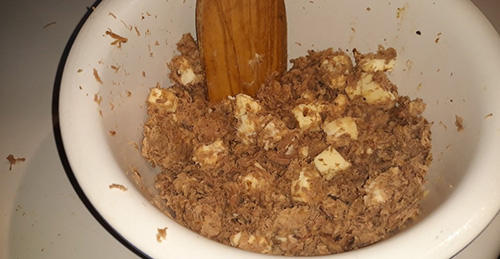
For 2lbs of cooked beef, we will simply use another pound of butter. If you were doing 20lbs of beef you would apply a third of the fat and that would be 10lbs. This ratio makes this process very simple to scale.
#4. Now you are going to press your butter meat mixture into your “pots” and leave about 2 inches from the top. This will assure you have room to pour your butter.
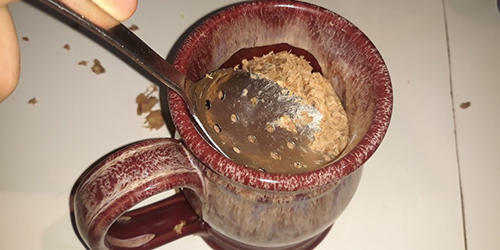
#5. Place your pots on a sheet pan and warm them around 200 degrees just until they are warmed through. This will take about a half-hour.
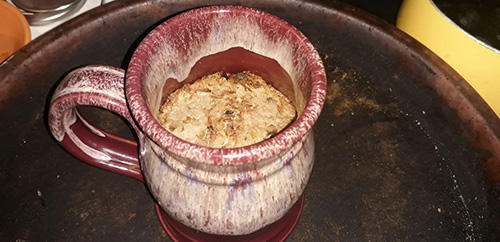
#6. In your saucepot melt the clarified butter. When you pull the pots from the oven you can start ladling some warm clarified butter into the open space in your pots. Fill them up good. This seal does all the preserving.
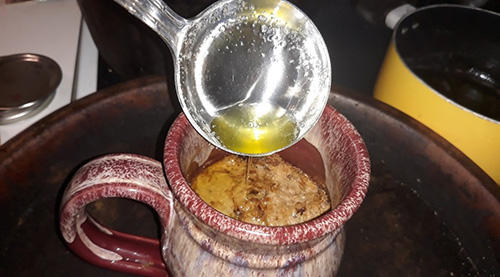
I used about ½ cup of melted clarified butter.
#7. Now chill the pots completely and you have potted your first bit of beef.
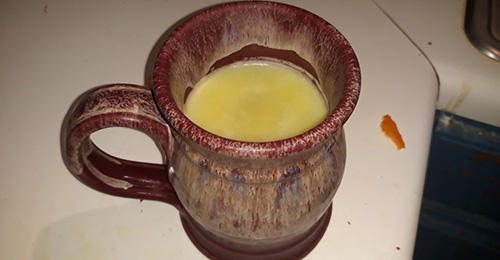
If you can keep the clarified butter intact you will be able to store these pots for months at a time. This requires storage in a cold, undisturbed environment. There may be no better way to preserve your meat in the winter. These pots can be stored covered outside in an off-grid situation. You might even be able to get away with storing them in a root cellar.
Potted meat has come a long way since the 1700s. When you make this potted beef, you will see just how different and how delicious home potted meat can be. It’s much more than a cheap amalgamation of pork parts and chicken parts that are canned under pressure.
You might also add herbs to this potted meat recipe. Things like oregano and thyme are not only going to flavor your meat but they are also going to add some medicinal properties to your recipe.
There is no denying it, cooking from scratch is true salvation and one of the most important survival skills.
Other self-sufficiency and preparedness solutions recommended for you:
Healthy Soil + Healthy Plants = Healthy You
The vital self-sufficiency lessons our great grand-fathers left us
Knowledge to survive any medical crisis situation
Liberal’s hidden agenda: more than just your guns
Build yourself the only unlimited water source you’ll ever need
4 Important Forgotten Skills used by our Ancestors that can help you in any crisis


